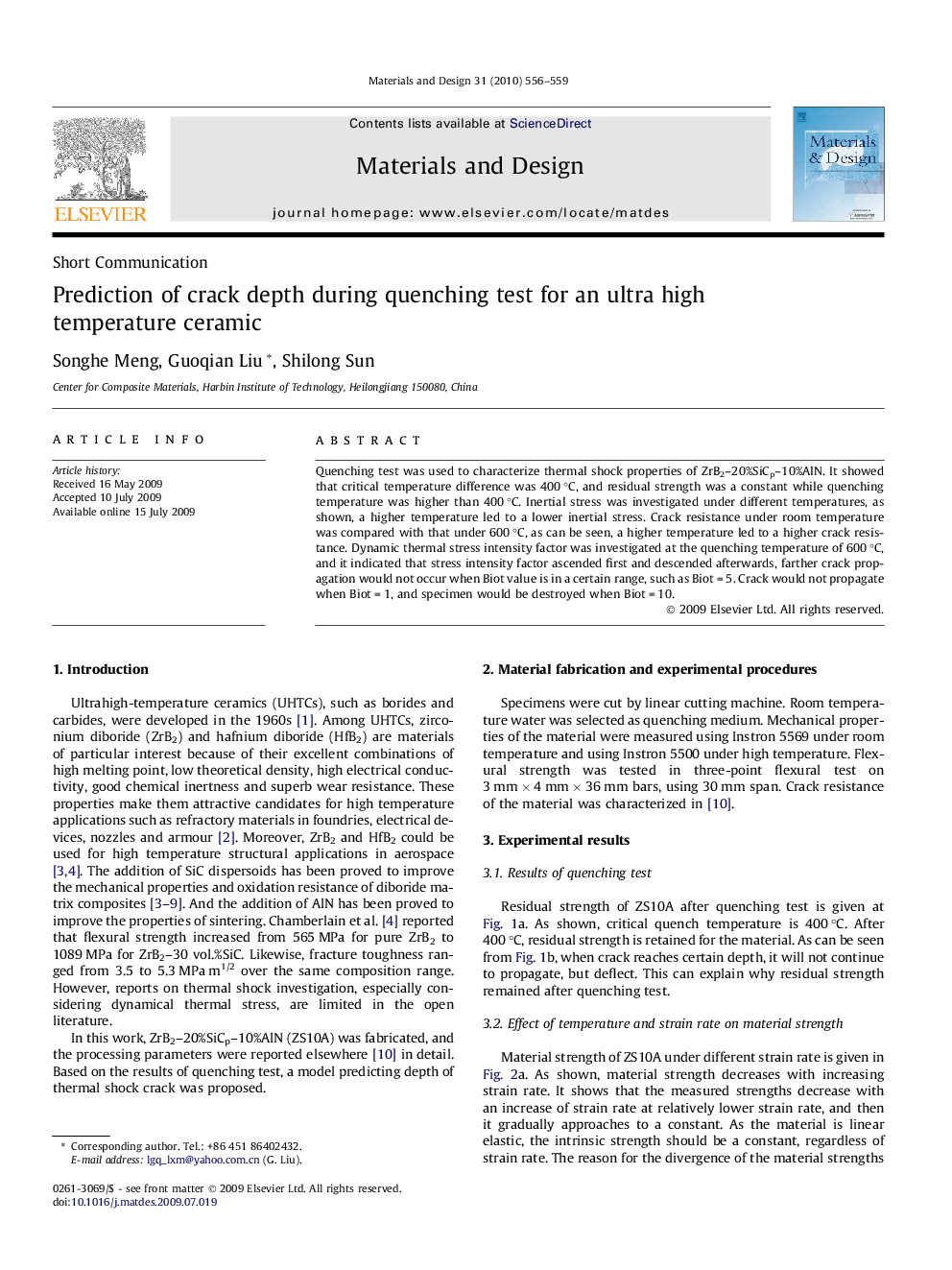| Article ID | Journal | Published Year | Pages | File Type |
|---|---|---|---|---|
| 832330 | Materials & Design (1980-2015) | 2010 | 4 Pages |
Quenching test was used to characterize thermal shock properties of ZrB2–20%SiCp–10%AlN. It showed that critical temperature difference was 400 °C, and residual strength was a constant while quenching temperature was higher than 400 °C. Inertial stress was investigated under different temperatures, as shown, a higher temperature led to a lower inertial stress. Crack resistance under room temperature was compared with that under 600 °C, as can be seen, a higher temperature led to a higher crack resistance. Dynamic thermal stress intensity factor was investigated at the quenching temperature of 600 °C, and it indicated that stress intensity factor ascended first and descended afterwards, farther crack propagation would not occur when Biot value is in a certain range, such as Biot = 5. Crack would not propagate when Biot = 1, and specimen would be destroyed when Biot = 10.
